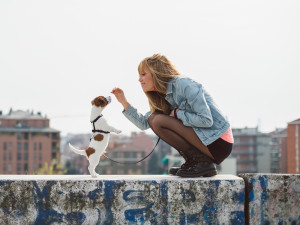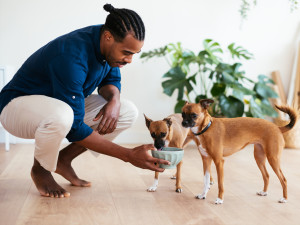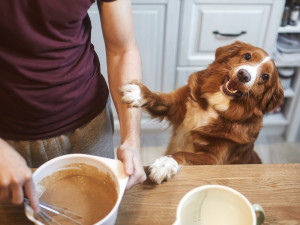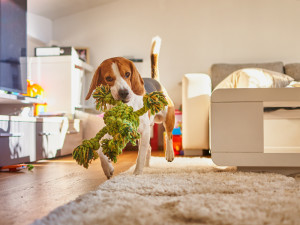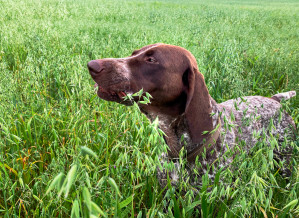How to Organize an Easter Egg Hunt for Your Pup
Want to include your four-legged family member in the seasonal fun? Of course you do.
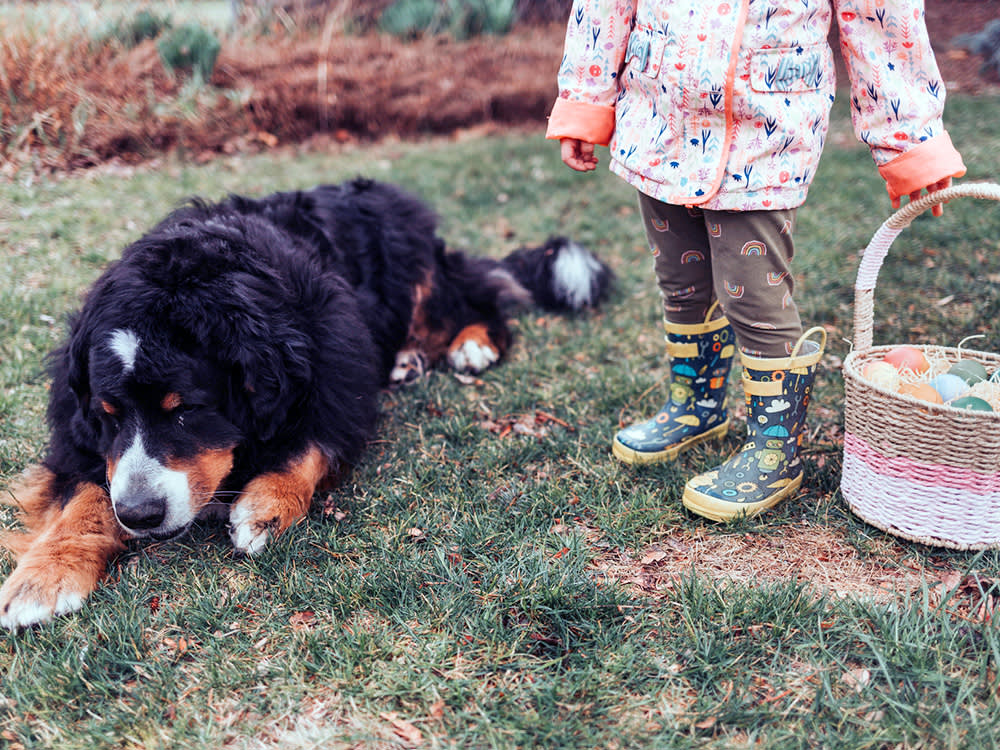
Share Article
As Easter comes up this weekend, it’s not just humans who want to get involved in the festivities; our dogs deserve a slice of joy, too. From dog-friendly Easter egg hunts to seasonal treats, there are tons of ways to make this holiday special for your pup.
But it’s crucial to navigate Easter delicacies carefully, keeping in mind what dogs can and cannot eatopens in a new tab. Dive into the world of Easter egg hunts for dogs, while ensuring their safety and enjoyment throughout the festivities.

Get (totally free) deals for food, treats, accessories, tech, and way more pet parenting must-haves.
opens in a new tabEaster activities for dogs: what treats to use
First, it’s essential to understand what treats are safe for our dogs. We’re lucky enough to indulge in chocolate and other tasty treats, but remember that a lot of that chocolate-y, sugar-y goodness is a no-go for pups.
What dogs can eat at Easter
Dog-friendly Easter treats: Opt for specially formulated dog treats that are Easter-themed. These treats are designed with canine health in mind, ensuring they’re both delicious and safe. Look for reputable brands that use high-quality ingredients suitable for dogs.
Fresh fruits and vegetablesopens in a new tab: Treat your pup to their five-a-day as a healthy Easter snack. Apples, blueberries and celery are excellent options that most dogs adore to crunch on. Just be sure to remove any seeds or pits that could potentially be a choking hazard.
Plain, cooked meat: If you’re planning a special Easter meal for your pup, plain, cooked meat, such as chicken or turkey, can make for a tasty and protein-rich treat. Lamb is a seasonal treat that is filled with amino acids and protein for pups, just make sure they aren’t given any cooked bones and avoid seasoning or sauces, as these can upset your dog’s stomach.
What dogs cannot eat at Easter
Chocolate: One of the most well-known hazards for dogs during Easter is chocolate. The compound theobromine found in chocolate can be toxic to dogs and may lead to symptoms ranging from vomiting and diarrhea to heart palpitations and seizures, and, in extreme cases, even death. It’s essential to keep all chocolate products, including Easter eggs, out of reach.
Xylitol: This sweetener opens in a new tabis a sugar substitute that is often found in sugar-free treats, but can also be a hidden ingredient in everyday items such as peanut butter. Keeping an eye on food labels is essential, as even small amounts of xylitol can cause a dangerous drop in blood sugar levels and liver failure in dogs.
Grapes and raisinsopens in a new tab: A staple in many Easter treats, grapes, and raisins are extremely toxic to dogs, potentially causing kidney failure. Keep any baked goods containing these ingredients far away from your pup.
How to organize a dog-friendly Easter egg hunt
Now that we’ve covered the dos and don’ts of safe Easter treats for dogs, let’s dive into the highlight of Easter for dogs: Easter egg hunts. Just like children, dogs love the thrill of the hunt, and organizing an Easter egg hunt for them can provide hours of entertainment and mental stimulation.
Encourage their natural instinct to sniff and search with a few simple steps.
Choose a safe location: If you can, opt for a secure and spacious outdoor area, such as your garden or a local park where your dog can roam freely without the risk of getting lost or injured. If you only have indoor space, don’t worry — you can still host a mini hunt inside. Just make sure to move any hazards out of the way beforehand.
Hide dog-friendly treats: Instead of traditional chocolate eggs, hide dog-friendly Easter treats, such as small pieces of cooked chickenopens in a new tab, commercial dog treats, or themed toys in various hiding spots around the area. You can also hide toys or puzzle feeders opens in a new tabto add variety to the hunt.
Let the hunt begin: Release your furry friend and watch as they eagerly sniff out the hidden treats. If your dog already has a ”find it” cue or something similar, use it. Otherwise, you might have to guide your dog slightly to the first hiding spot.
Reward and encourage: When your pup finds a treat, verbally reward your dog with plenty of praise (and cuddles, if you insist) for their hard work and determination, so they know this is the behavior you want. Then, they can go off and find the rest of the treats.
Supervise to stay safe: Keep a close eye on your dog during the hunt to ensure they don’t eat anything that is toxic to dogs or overexert themselvesopens in a new tab. If your dog becomes overwhelmed or tired, take a break and offer them plenty of water and rest.
Practicing moderation
While Easter egg hunts can be an exciting adventure for dogs, it’s essential to supervise them closely and ensure that they don’t ingest any non-edible items or overindulge in treats. Keep a close eye on your your dog throughout the hunt and intervene if necessary to prevent any accidents or mishaps.
As always, it’s crucial to practice moderationopens in a new tab when it comes to treats, even those that are safe for dogs. Overindulgence can lead to digestive upset and weight gain, so be mindful of how many treats you’re offering your pup during the Easter festivities.
As a rule of thumb, treats should only make up 10 percent of your dog’s daily caloric intake. If you’re pushing that 10 percent already, consider hiding some of their “normal” food portions from the day — dry food can be a great option, especially if your pup is heavily food-driven.

Orla Pentelow
Orla Pentelow is Kinship UK’s Senior Editor. She has previously written for British Vogue, Bustle, Yahoo and The Telegraph. When not at her desk liking dog videos she’s out and about with her rescue pup, Luna, who works primarily as chief distractor.
Related articles
![Man laying on floor playing with dog]() opens in a new tab
opens in a new tabHow to Puppy Proof Your Home
Is your home a danger zone for a new dog? Follow these pro tips.
![Beagle dog fetching a green rope in a dog-proofed living room.]() opens in a new tab
opens in a new tabHow to Dog-Proof Your Home
Our room-to-room guide to get your house in dog-safe shape.
![A woman in an orange cropped jacket walks her white dog toward a vet in a waiting room]() opens in a new tab
opens in a new tabI Freaked Out at the Emergency Vet So You Don’t Have To
What to expect from and how to make the most of a trip to the ER.
![Red-haired woman holding sleeping dog in her lap on the bed]() opens in a new tab
opens in a new tab6 Reasons Your Dog Is Vomiting
And how to help them feel better fast.
![Kurzhaar's dog eats grass, oats, happy puppy playing in the meadow]() opens in a new tab
opens in a new tabWhy Do Dogs Eat Grass?
Your pup is literally vegging out—when it’s no big deal and when to worry.
